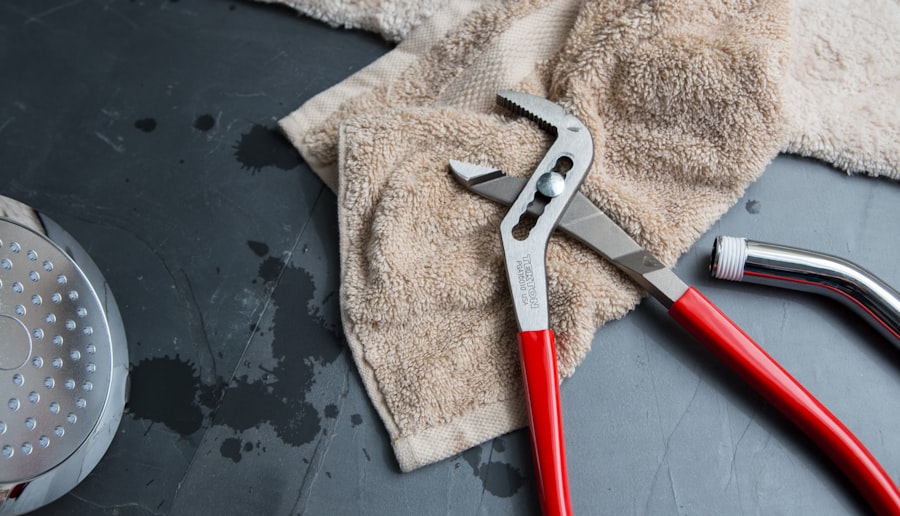
- By: admin
- Category: Commercial Floor Cleaning Machines
- 0 comment
In the bustling world of commercial and industrial facilities, the significance of clean floors cannot be overstated. Floors are not merely surfaces to walk on; they are the foundation of a safe and productive environment. A well-maintained floor not only enhances the aesthetic appeal of a space but also plays a crucial role in health and safety standards.
For contract cleaners, building managers, and facility managers, understanding the importance of clean floors is essential for maintaining operational efficiency and ensuring compliance with industry regulations. Clean floors contribute to a positive first impression for clients and visitors, reflecting the professionalism of the organisation. Moreover, they are vital in preventing accidents caused by slips, trips, and falls, which can lead to costly legal claims and insurance premiums.
In this article, we will explore the drawbacks of manual mopping, the advantages of machine scrubbing, and how these methods impact cost, time efficiency, health and safety, environmental considerations, and overall cleaning quality. Please feel free to get in touch with us through our Contact Us page.
Summary
- Clean floors are essential for maintaining a safe and hygienic environment in any setting.
- Manual mopping can be time-consuming, physically demanding, and less effective at removing stubborn dirt and grime.
- Machine scrubbing offers faster and more thorough cleaning, reducing labour costs and improving overall cleanliness.
- Investing in machine scrubbing can lead to long-term cost savings and improved productivity.
- Machine scrubbing not only improves the cleanliness of floors but also reduces the risk of slips, trips, and falls, promoting a safer environment for all.
The Drawbacks of Manual Mopping
While manual mopping has been a traditional cleaning method for decades, it is not without its drawbacks. One of the primary issues with this approach is the inconsistency in cleaning results. Manual mopping relies heavily on the skill and diligence of the cleaner, which can lead to uneven cleaning and missed spots.
In high-traffic areas, such as shopping centres or warehouses, this inconsistency can result in unsightly stains and grime build-up that detracts from the overall cleanliness of the facility. Additionally, manual mopping can be labour-intensive and time-consuming. Cleaners often have to repeatedly dip their mops into buckets of water mixed with cleaning solutions, which can lead to fatigue and decreased productivity.
This method also requires frequent changes of water to avoid spreading dirt around rather than removing it. In environments where hygiene is paramount, such as hospitals or food processing plants, relying solely on manual mopping may not meet the stringent cleanliness standards required.
The Advantages of Machine Scrubbing

In contrast to manual mopping, machine scrubbing offers a host of advantages that can significantly enhance cleaning efficiency and effectiveness. Floor scrubbers are designed to tackle large areas quickly and thoroughly, utilising advanced technology to ensure a consistent clean. These machines can easily navigate through tight spaces and cover vast expanses in a fraction of the time it would take a cleaner using a mop and bucket.
Moreover, machine scrubbing provides superior cleaning results by employing a combination of scrubbing brushes and powerful suction systems. This dual-action approach not only removes dirt and grime but also extracts moisture from the floor, reducing drying times significantly. For instance, in a busy retail environment where foot traffic is constant, using a floor scrubber can ensure that surfaces remain clean and safe for customers while minimising disruption to operations.
Cost and Time Efficiency
When evaluating cleaning methods, cost and time efficiency are critical factors for any facility manager or contract cleaner. While the initial investment in machine scrubbing equipment may seem substantial, the long-term savings often outweigh these costs. Machine scrubbers can reduce labour hours significantly; what might take several hours with manual mopping can often be completed in under an hour with a scrubber.
This efficiency allows staff to focus on other essential tasks rather than spending excessive time on floor maintenance. Additionally, machine scrubbing can lead to lower water and chemical usage compared to traditional methods. Many modern scrubbers are designed to use less water while still achieving superior cleaning results.
This not only reduces operational costs but also aligns with sustainability goals that many organisations are striving to achieve. For example, a large warehouse that implements machine scrubbing may see a reduction in water bills while simultaneously improving its cleaning standards.
Health and Safety Benefits
The health and safety benefits of machine scrubbing cannot be overlooked. Clean floors are essential for preventing workplace accidents; however, the method used to achieve that cleanliness plays a significant role in overall safety. Manual mopping often leaves floors wet and slippery, increasing the risk of slips and falls.
In contrast, machine scrubbers effectively remove moisture from surfaces, ensuring that floors dry quickly and safely. Furthermore, machine scrubbing can contribute to improved indoor air quality by reducing dust and allergens that accumulate on floors. In environments such as schools or healthcare facilities, where vulnerable populations may be present, maintaining high air quality is crucial.
By employing machine scrubbing techniques that thoroughly clean floors without leaving behind residues or moisture, facility managers can create healthier environments for all occupants.
Environmental Impact

In today’s eco-conscious world, the environmental impact of cleaning methods is an increasingly important consideration for businesses. Machine scrubbing offers several advantages in this regard. Many modern scrubbers are designed with eco-friendly features that minimise water usage and reduce chemical waste.
By using less water and fewer harsh chemicals, organisations can significantly decrease their environmental footprint while still achieving high cleaning standards. Moreover, some floor scrubbers are equipped with advanced filtration systems that capture dirt and debris rather than allowing it to re-enter the environment. This not only enhances cleaning efficiency but also contributes to a cleaner workplace atmosphere.
For instance, a manufacturing facility that adopts machine scrubbing may find that it not only meets regulatory requirements but also enhances its reputation as an environmentally responsible organisation.
Quality of Cleaning
Ultimately, the quality of cleaning achieved through machine scrubbing far surpasses that of manual mopping. The precision with which machines operate ensures that every inch of flooring is addressed effectively. With adjustable settings for different floor types and conditions, machine scrubbers can be tailored to meet specific cleaning needs—whether it’s removing stubborn stains from concrete or maintaining polished surfaces in an office environment.
Real-world examples abound; consider a large shopping centre that experiences heavy foot traffic daily. By implementing machine scrubbing as part of their cleaning regimen, they can maintain pristine floors that not only look appealing but also enhance customer satisfaction. The consistent quality achieved through machine scrubbing helps prevent long-term damage to flooring materials, ultimately saving money on repairs or replacements down the line.
The Clear Winner
In conclusion, when it comes to maintaining clean floors in commercial and industrial settings, machine scrubbing emerges as the clear winner over manual mopping. The advantages are manifold: enhanced efficiency, superior cleaning quality, improved health and safety standards, reduced environmental impact, and long-term cost savings all contribute to making machine scrubbing an indispensable tool for facility managers and contract cleaners alike. As organisations continue to prioritise cleanliness and safety in their operations, investing in machine scrubbing technology is not just a smart choice; it is a necessary step towards achieving excellence in facility management.
By embracing this modern approach to floor care, businesses can ensure they meet both regulatory requirements and customer expectations while fostering a safe and welcoming environment. FAQ Section: 1. **What types of facilities benefit most from machine scrubbing?**
Machine scrubbing is particularly beneficial in high-traffic areas such as shopping centres, warehouses, hospitals, schools, and manufacturing facilities where cleanliness is paramount.
2. **Are there different types of floor scrubbers available?**
Yes, there are various types of floor scrubbers available including walk-behind models for smaller areas and ride-on models for larger spaces. Each type is designed to cater to specific cleaning needs.
3. **How often should I use a floor scrubber?**
The frequency of use depends on foot traffic levels and specific industry requirements; however, many facilities find that daily or weekly use is effective in maintaining cleanliness. 4.
**Can machine scrubbing help with specific stains?**
Yes, many modern floor scrubbers come equipped with adjustable settings that allow them to tackle various types of stains effectively. 5. **Is training required to operate a floor scrubber?**
While many floor scrubbers are user-friendly, training is recommended to ensure safe operation and optimal cleaning results.
Most manufacturers provide training resources or support for new users.
FAQs
What are the differences between manual mopping and machine scrubbing?
Manual mopping involves using a mop and bucket to clean floors by hand, while machine scrubbing uses a motorized scrubbing machine to agitate and clean the floor surface.
Which method is more effective for cleaning floors?
Machine scrubbing is generally more effective for cleaning floors as it can provide a deeper and more thorough clean compared to manual mopping.
Is one method more time-efficient than the other?
Machine scrubbing is typically more time-efficient than manual mopping, as the machine can cover larger areas and clean more quickly than manual methods.
What are the potential cost differences between manual mopping and machine scrubbing?
While the initial investment in a scrubbing machine may be higher than purchasing mops and buckets, machine scrubbing can be more cost-effective in the long run due to its efficiency and effectiveness.
Are there any environmental considerations when comparing manual mopping and machine scrubbing?
Machine scrubbing may use more water and energy than manual mopping, so it’s important to consider the environmental impact of each method and use resources responsibly.
Which method is better for maintaining hygiene and cleanliness?
Machine scrubbing is generally better for maintaining hygiene and cleanliness, as it can remove more dirt, grime, and bacteria from floors compared to manual mopping.
